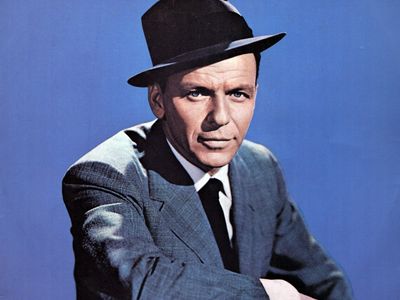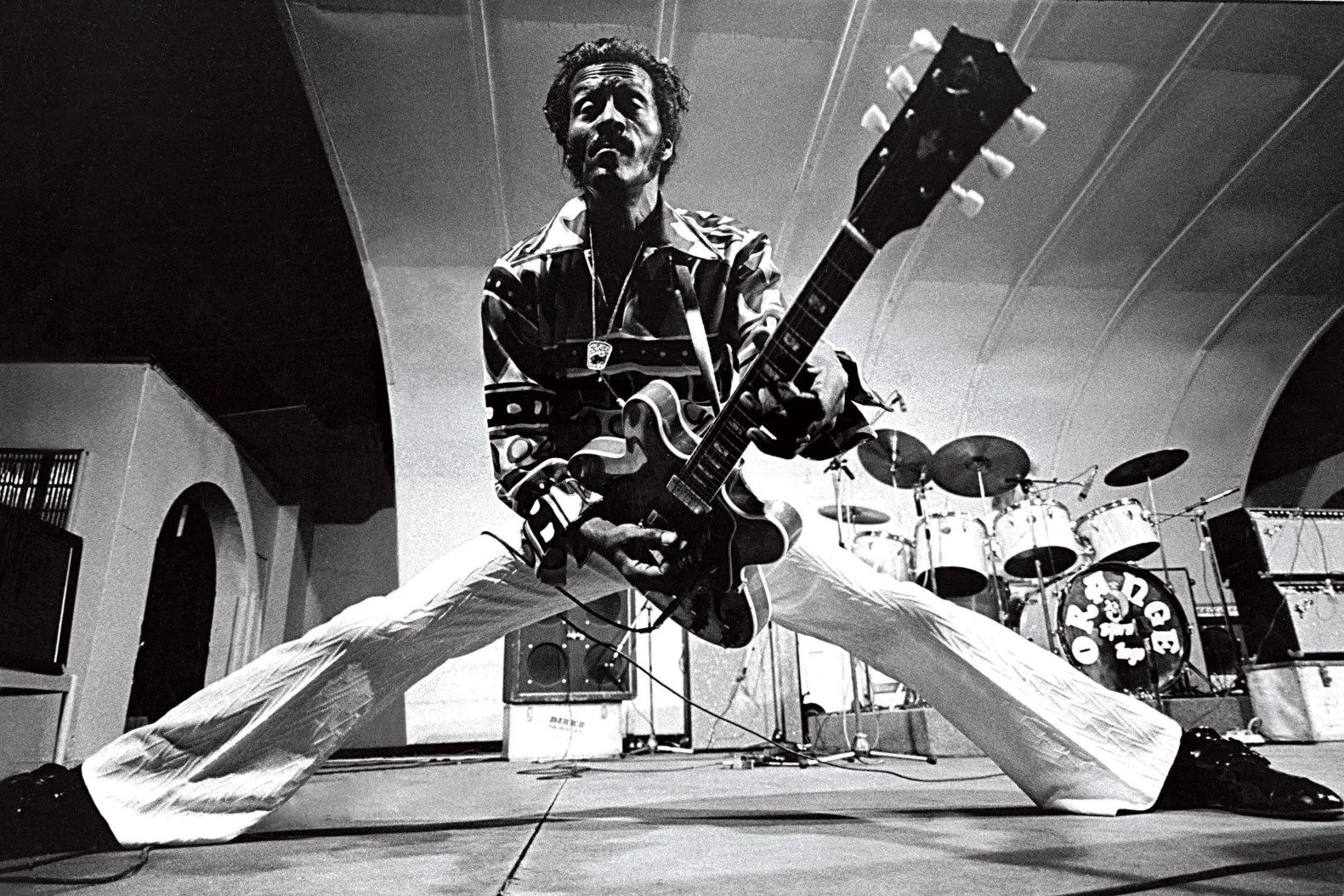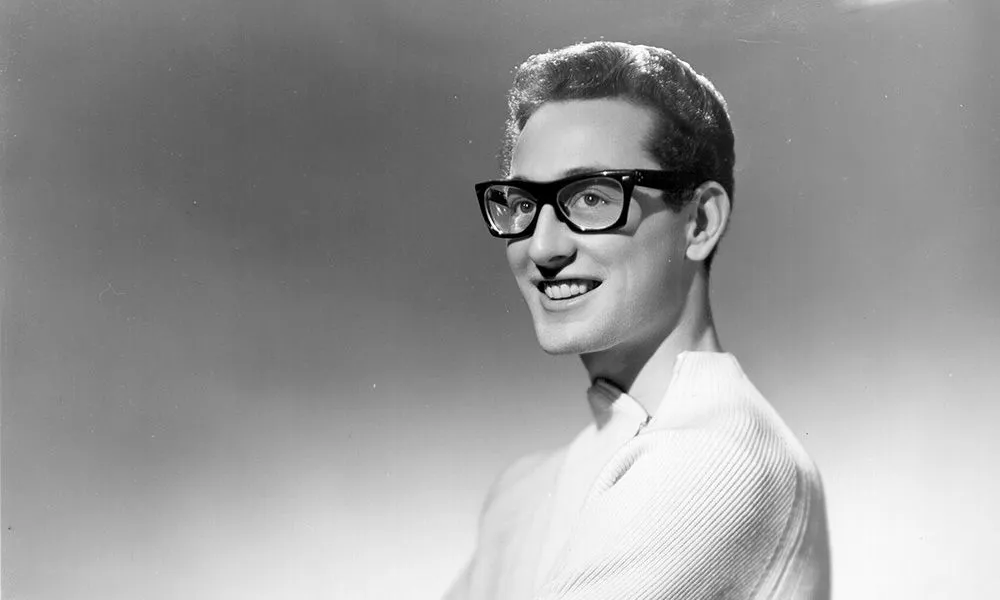Frank Sinatra: A Legend of Popular Music
Frank Sinatra was a man to whom all conceivable superlatives of popular music could be applied. In the course of his 60-year career, he managed to maintain an unmistakable style and, despite contrary trends, always remain at the top of the commercial success.
Frank Sinatra's Career Start
He became one of the most important figures in the American and international music business. With over 1,800 recordings, 60 films, nine Grammys and an Oscar, he broke all the entertainment industry's records. From 1955 to 1995, a Sinatra song was represented weekly in the Billboard charts.
The role model for all entertainers was born Francis Albert Sinatra on December 12, 1915 in Hoboken, New Jersey, the son of a firefighter. In 1933, he attended a concert by his idol Bing Crosby and was so captivated that he decided to become a singer. However, his father was against it and warned, “Singing is for sissies!”
But before his senior year ended, young Frank dropped out of high school to pursue a career in music. He initially financed himself as a copy boy at a local newspaper. In the fall of 1935, he formed the vocal group “The Hoboken Four,” which occasionally appeared on the radio. Sinatra also had a job as a singing waiter at the “Rustic Cabin” in Englewood, New Jersey.
In the spring of 1939, trumpeter Harry James discovered him on the radio after he had just left Benny Goodman to form his own big band. Together with James, Sinatra made his first recording on July 13, 1939. Over 180 more recordings would follow over the next 50 years.
Frank's Love Life
That same year, he married Nancy Barbato, the love of his high school days. They had three children, Nancy, Frank Jr. and Tina. During this time, Sinatra switched to the more successful bandleader Tommy Dorsey. The collaboration gave American audiences 16 top ten hits over the next two and a half years, including “I'll Never Smile Again,” which was later inducted into the Grammy Hall of Fame. During that time, Dorsey and Sinatra played in many radio shows, and Sinatra appeared with the band in his first films, “Las Vegas Nights” and “Ship Ahoy.”
In the spring of 1942, Sinatra was ready to embark on a solo career and recorded a four-song session on his own, including the Cole Porter classic “Night And Day”. This marked the beginning of Sinatra's illustrious career, which has lasted for over 50 years, as he took his throne as the greatest interpreter of American classics (Irving Berlin, George Gershwin, Richard Rogers and Cole Porter).
His performances at the Paramount Theater in New York earned him the status of America's first teenage idol, when bobby-sox-wearing high school girls howled and shrieked, making the hall unsafe. During this phase, he received the affectionate nickname 'The Voice' from his fans.
An unparalleled solo career was to follow. Sinatra left his unmistakable stamp on some American classics. Every song he interpreted became an evergreen in the future. Among them are the hymn to the Big Apple “New York, New York”, “Strangers In The Night”, “White Christmas”, “Moon River”, “Love And Marriage” and the legendary perennial “My Way”.
During this period, Sinatra was a fixture on American radio, his smiling silhouette singing to the romantic American on the screen. Sinatra's smart blue eyes shone on Technicolor posters for every American and became his trademark. “Ol' Blue Eyes“ was to become his nickname. In 1945, the musical ‘Anchors Aweigh’ (”Holiday in Hollywood") with Gene Kelly became the most successful film of the year, not least because of Sinatra's swinging pop songs.
Post War Period
Sinatra's art of singing personified the swing era of the post-war period. However, in the early 50s, health and personal problems began to cast a shadow over his career for the first time. In 1951, an affair with sexpot Ava Gardner led Sinatra to divorce his long-standing wife Nancy so that he could marry the film diva. The following year, he suffered a severe vocal cord injury and his record productions were put on hold for the time being. To make matters worse, his agency MCA fired him.
Although Sinatra's biographers often describe the 50s as the low point of his singing career, he now sold more records than ever before. In 1955, he returned with the melancholy masterpiece “In The Wee Small Hours”. The following year, the album “Songs For Swinging Lovers” dominated the charts for 66 weeks, despite the fact that rock'n'roll was dominated by Elvis Presley in America. Even later, in the mid-60s, when the Beatles were crossing the pond, Sinatra's songs were still on the charts.
Sinatra never gave up and kept fighting. In 1953, he went door-to-door at Columbia Pictures and managed to get Fred Zinnemann to hire him for his film “From Here To Eternity”. The film company paid him a mere $8,000 for the role of GI Angelo Maggio – peanuts compared to the $150,000 per film he had been earning before. The Sinatra way paid off: Oscar for Best Supporting Actor.
The unexpected award opened the doors to more demanding Hollywood productions for him, and from then on he was not only hired for his voice. He also did not shy away from difficult roles such as “The Man With The Golden Arm”, a story about a heroin addict. At the same time, however, he continued to make comedies and musicals. Both colleagues and critics attested to his outstanding acting talent.
Sinatra, the Businessman
In the 1960s, Sinatra's talent as a businessman increasingly came to the fore. He founded his own label, Reprise Records, and topped the charts with albums like “Nice and Easy” and “Strangers in the Night”. He began investing his money in real estate, casinos, racetracks and industrial companies. At the same time, his unforgettable Las Vegas performances with his cronies Dean Martin, Sammy Davis Jr., Peter Lawford and Joey Bishop went down in American entertainment history.
The film comedies such as “Ocean Eleven” (“Frankie and his Spies”) or “Robin And The Seven Hoods” (“Seven Against Chicago”) with his 'Rat Pack' companions also earned Frank a dubious reputation when he became involved with the Kennedy family. At the time, he supported JFK's election campaign with the title song “High Hopes”. Rumors circulated that it was Sinatra who introduced Kennedy to his mistress, the same woman who shared a bed and a table with mob boss Sam Giancana. The rumors were never confirmed, but there was always a hint of disrepute surrounding Sinatra's business dealings.
Sinatra's generous spirit, however, was less often the subject of press coverage. He donated millions to relief organizations and often sent anonymous money to the needy, whose plight he had heard about in the media. It was he who fought against Hollywood's blacklists during the McCarthy era and put banned filmmakers on his payroll. He was also an outspoken opponent of racism and helped launch the careers of talented people of color, such as Sammy Davis Jr.
His private affairs, however, were always good for headlines. After his divorce from Ava Gardner in 1957, Sinatra was on the verge of suicide. Critics claimed that his songs were imbued with more emotion than ever before during this period. In 1966, he scandalously married Mia Farrow. Sinatra was 50 at the time, his wife an innocent 20. Friend Dean Martin commented mockingly: “In my house bar, there's Scotch older than Mia Farrow!”
His Private Life
The marriage lasted only two years, but Sinatra and Mia remained friends. When, for example, it became known in the mid-90s that Woody Allen was having an affair with Farrow's adopted daughter, it was Sinatra who offered a reward for anyone who would break Allen's legs. In 1976, Sinatra finally anchored in the harbor of marriage with Barbara Marx, the former wife of comedian Zeppo Marx (one of the Marx Brothers).
Sinatra was still said to have the construction plans for the American pop song. However, he visibly found it more difficult to compete against the young rock bands. In 1969, Paul Anka composed the aforementioned hit “My Way” for him: the song became his trademark, and he played it at the end of every concert.
In the spring of 1971, the unexpected news broke that Sinatra wanted to retire. All the more surprising was the premature end of this retirement in 1973 with the album “Ol' Blue Eyes Is Back”. However, it became visibly quieter around the aging entertainer, who concentrated primarily on his live performances in the big Las Vegas shows.
His last big hit came in 1977 with “New York, New York”, the title song of the movie of the same name. In the 90s, the swinging retiree recorded the album “Duets”, a collection of old classics that he performed as a duet with other popular musicians, including Bono from U2. He won his last Grammy for the follow-up “Duets II” in 1995. In 1995, at the age of 80, he retired from show business for good. Three years later, on May 14, 1998, Frank Sinatra died of a heart attack.
A series of releases came onto the market in 2008 to mark the tenth anniversary of the entertainer's death. The “Nothing But The Best” compilation CD was released in May, featuring a selection of 22 tracks including two special features: all tracks have been digitally remastered, and the song “Body And Soul” also includes a completely new track. For this, the singer's voice was filtered out of an older recording and underlaid with a completely new orchestral recording.
Despite all the dirty laundry that has been washed in the media, Frankie Boy's career remains extraordinary and is considered a prime example of the realization of the “American Dream” in show business. One thing remains to be said: Sinatra is and remains one of the lowest common denominators that music fans around the world can agree on.



